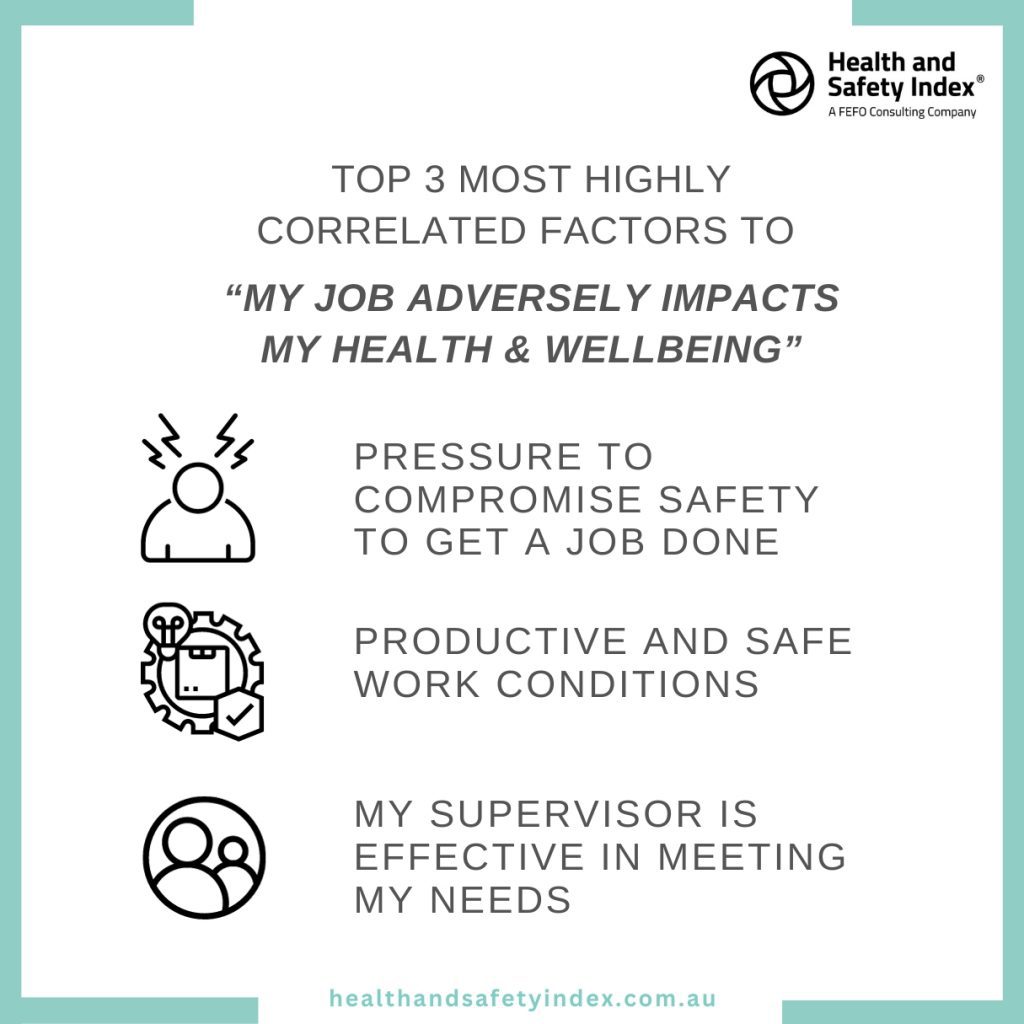In recent times we have seen the introduction of several international and domestic guidance materials from regulators to assist with managing psychosocial factors in the workplace, e.g.
- ISO 45003: International standard for managing psychosocial risk at work
- SafeWork NSW: Code of Practice for Managing psychosocial hazards at work
- Western Australia Department of Mines: Code of Practice: Psychosocial hazards in the workplace
- WorkSafe Victoria: Proposed OHS Amendment (Psychological Health) Regulations
- SafeWork Australia: Model Code of Practice on managing psychosocial hazards at work (Code of Practice)
Psychosocial hazards
“One of the most important requirements is to understand how psychosocial hazards and risk factors interact with each other so they should not be considered in isolation”.
– Mark Wright
For example, the combined effect of high work demands, low control, and low support increases the likelihood and severity of harm to a worker’s health. Conversely, high work demands with the control factors of good leadership and support can mitigate the negative impact on a worker’s health. Often, hazards in isolation are harmless, but when combined can create unreasonable levels of risk, e.g. 1+1=3!
The Health and Safety Index is an effective way to obtain feedback at scale from your entire workforce and give their voices a platform. Obtaining feedback is also a great way to recognise and acknowledge the teams who are performing well. In other words, a positive, solution-focused approach. The Health and Safety Index has three core surveys:

Psychosocial Benchmark Results
Based on June 2023 Health and Safety Index benchmark data, we analysed the most highly correlated factors related to the outcome of “My job has an adverse effect on my health and wellbeing”. The top most highly correlated psychosocial factors are:
- I feel pressured to compromise safety to get a job done.
- The conditions of my job allow me to be as productive and safe as practicable.
- When I reach out for help my supervisor is effective in meeting my needs.

Work-related stress is an increasingly prevalent issue in today’s fast-paced society. As we strive to meet the demands of our jobs, we often end up compromising our health and wellbeing. This problem is especially prevalent in workplaces where safety is not prioritized, or where the work conditions are not conducive to productivity or safety. It’s time we delve into understanding how our jobs are adversely impacting our health and wellbeing, and the top three factors that correlate with this issue. In doing so, we can create a healthier, safer workplace environment for everyone.
1. Pressure to Compromise Safety to Get a Job Done
One of the most significant factors that contribute to work-related stress is the pressure to compromise safety to get a job done. In an environment where deadlines are tight and expectations are high, employees often feel pressured to bypass safety protocols to meet the demands of their role. This not only puts their physical health at risk but also contributes to heightened stress levels and mental health problems. Employers should ensure that safety measures are in place and adhered to, regardless of work pressure.
2. Productive and Safe Work Conditions
Another critical factor that significantly affects our health and wellbeing at work is the conditions of our work environment. A productive and safe work condition is not just about having the right equipment or safety measures in place. It also involves creating a positive work culture where employees feel valued, supported, and free from undue stress. A work environment that promotes mental wellbeing and productivity can significantly reduce work-related stress and improve overall health.
3. Effective Supervisor Support
The role of a supervisor goes beyond just overseeing work. An effective supervisor is one who understands the needs of their team members and provides the necessary support to meet those needs. This includes providing clear communication, constructive feedback, and creating a supportive and inclusive work culture. When employees feel that their needs are being met and that they are supported by their supervisors, they are less likely to experience work-related stress, leading to better health and wellbeing.
Work-related stress is a significant issue that needs to be addressed proactively. By understanding the factors that contribute to this problem, we can take steps to create a healthier and safer work environment. Remember, a happy and healthy employee is a productive employee.
Employers should demonstrate that psychosocial hazards and risk factors have been considered and recorded as a part of their hazard identification and risk management process. The hazard and risk assessments should be reviewed and updated regularly, including when changes are made at the workplace.
For more information on the Health and Safety Index survey tools such as the Psychosocial Dx, contact us.

